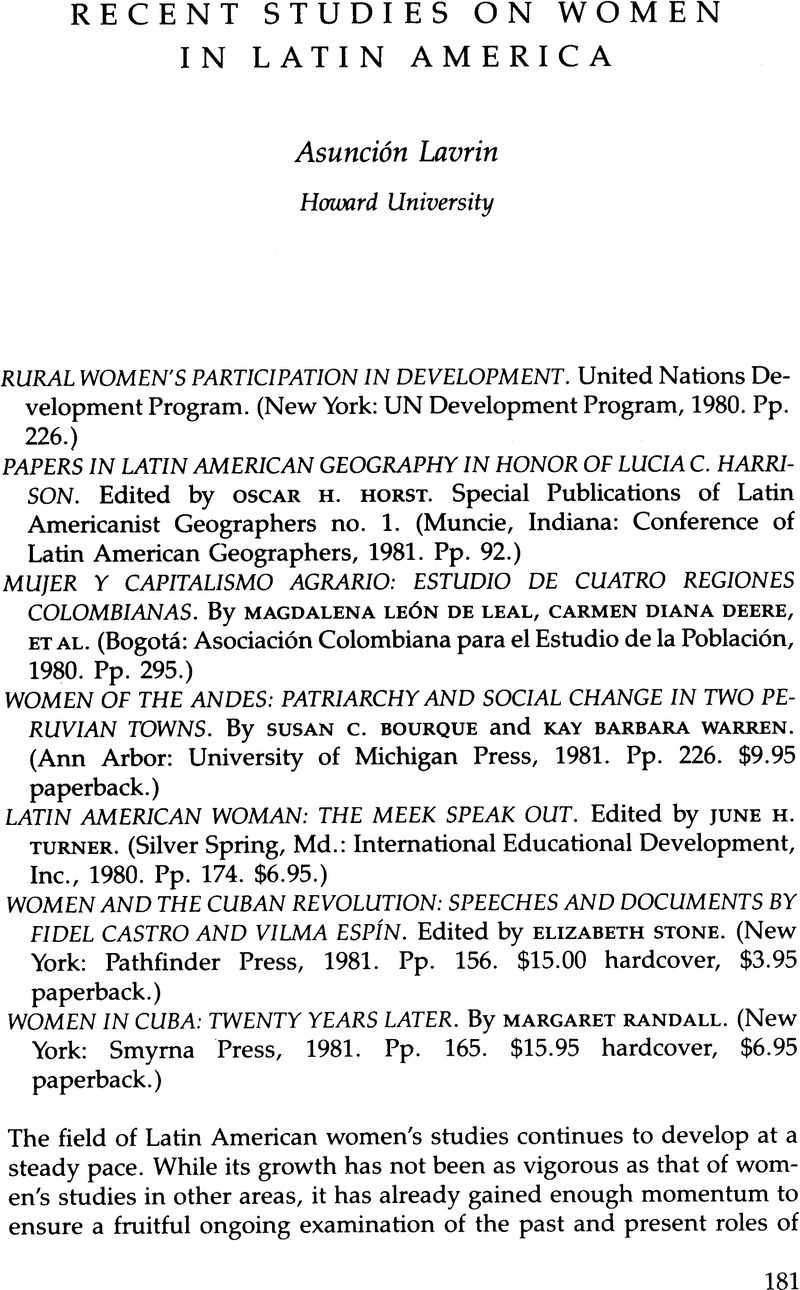Article contents
Recent Studies on Women in Latin America
Review products
Published online by Cambridge University Press: 24 October 2022
Abstract

- Type
- Review Essays
- Information
- Copyright
- Copyright © 1984 by Latin American Research Review
References
Notes
1. For a recent survey of works on Latin American women by social scientists, see Marysa Navarro, “Research on Latin American Women,” Signs: Journal of Women in Culture and Society 5, no. 1 (1979): 111–20.
2. For a sample of the new literature on women, see the following titles: Anna Macías, Against All Odds: The Feminist Movement in Mexico to 1940 (Westport, Connecticut: Greenwood Press, 1982); Margaret Randall, Todas estamos despiertas: testimonios de la mujer nicaragüense de hoy (Mexico: Siglo XXI Editores, 1981); Robert E. Biles, “Women and Political Participation in Latin America: Urban Uruguay and Colombia,” paper delivered at the Tenth Meeting of the Latin American Studies Association, Washington, D.C., 1982; also “Gender and Political Participation in Bogotá, Colombia,” Texas Journal of Political Studies 3 (Fall): 43–56; John Tutino, “Power, Class and Family: Men and Women in the Mexican Elite, 1750–1800,” The Americas 39, no. 3 (January 1983): 359–81; Elizabeth Kusnesof, “The Role of the Female-Headed Household in Brazilian Modernization: São Paulo 1765 to 1836,” Journal of Social History (Summer 1980): 589–613. The Centro de Documentación del Instituto de Estudios Sociales in Montevideo, Uruguay, published in 1982 several of the studies on women written by members of GRECMU (Grupo de Estudios sobre la Condición de la Mujer en el Uruguay). GRECMU was organized in 1979 and has a team of researchers studying women in Uruguay; it is one of the few centers in South America to carry out that kind of work. The titles of the works published in the last number of the GRECMU's magazine are: Suzana Prates, “Trabajo de la mujer en una época de crisis o cuando se pierde ganando”; Nea Filgueira, “De las diferencias biológicas a las desigualdades sociales: una ideología para la construcción del ‘ideal’ femenino”; Juan Carlos Fortuna, “Ideología doméstica y subordinación de la mujer”; Silvia Rodríguez Villamil, “La participación femenina en el mercado de trabajo uruguayo: 1880–1914”; Graciela Sapriza, “La imagen de la mujer y sus variantes: 1880–1910”; and Nelly Niedworok, “La mujer rural: familia y trabajo en el Uruguay.”
3. Navarro, “Research on Latin American Women.”
- 1
- Cited by


